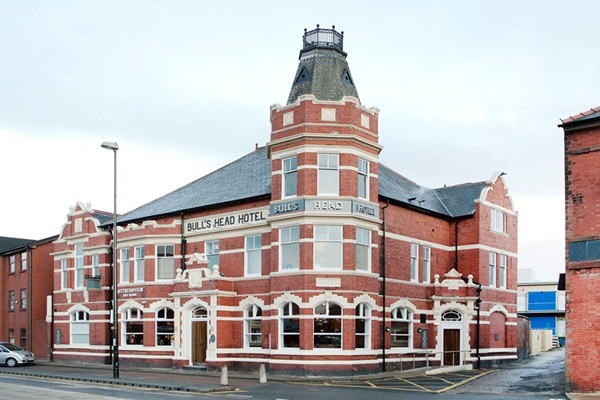Pub history
The Bull’s Head Hotel
Discover the history of Walkden.

This well-known local landmark is situated at busy crossroads today. The original Bull’s Head on this site was built in c1694. During the 19th century, the licence was held by the Gregory family for more than 60 years, until the lease expiry in 1893. The Bull’s Head was acquired by Threlfalls, but was too small for the fast-growing town. The old inn was demolished and replaced by the present, much larger, building.
A photograph and text about coalmining in the area
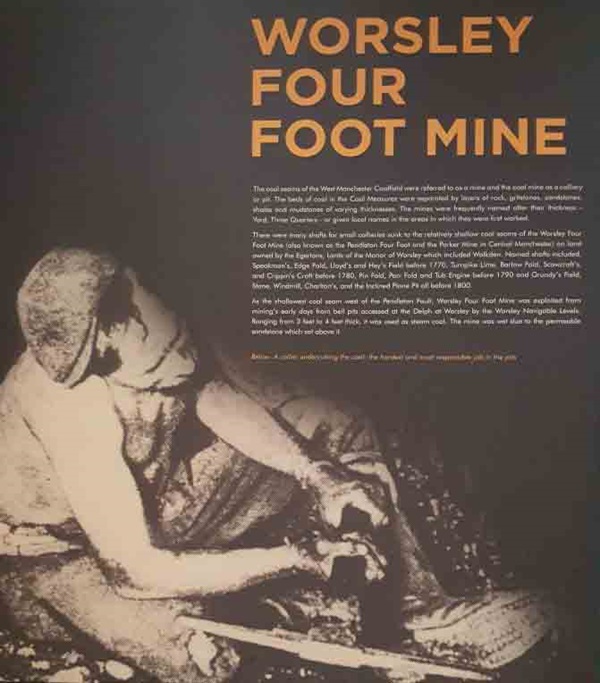
The text reads: The coal seams of the West Manchester Coalfield were referred to as a mine, and the coal mine as a colliery or pit. The beds of coal in the Coal Measures were separated by layers of rock, gritstones, sandstones, shales and mudstones of varying thicknesses. The mines were frequently named after their thickness – Yard, Three Quarters – or given local names in the areas in which they were first worked.
There were many shafts for small collieries sunk to the relatively shallow coal seams of the Worsley Four Foot Mine (also known as the Pendleton Four Foot and the Parker Mine in Central Manchester) on land owned by the Egertons, Lords of the Manor of Worsley, which included Walkden. Named shafts included Speakman’s Edge Fold, Lloyds and Hey’s Field before 1770, Turnpike Lime, Barlow Fold, Scowcroft’s and Crippin’s Croft before 1780, Pin Fold, Parr Fold and Tub Engine before 1790 and Grundy’s Field, Stone, Windmill, Charlton’s and the Inclined Plane Pit all before 1800.
As the shallowest coal seam west of the Pendleton Fault, Worsley Four Foot Mine was exploited from mining’s early days from bell pits accessed at the Delph at Worsley by the Worsley Navigable Levels. Ranging from three feet to four feet thick, it was used as steam coal. The mine was wet due to the permeable sandstone which sat above it.
Below: A collier undercutting the coal; the hardest and most responsible job in the pits
A photograph and text about the Manchester Coalfield
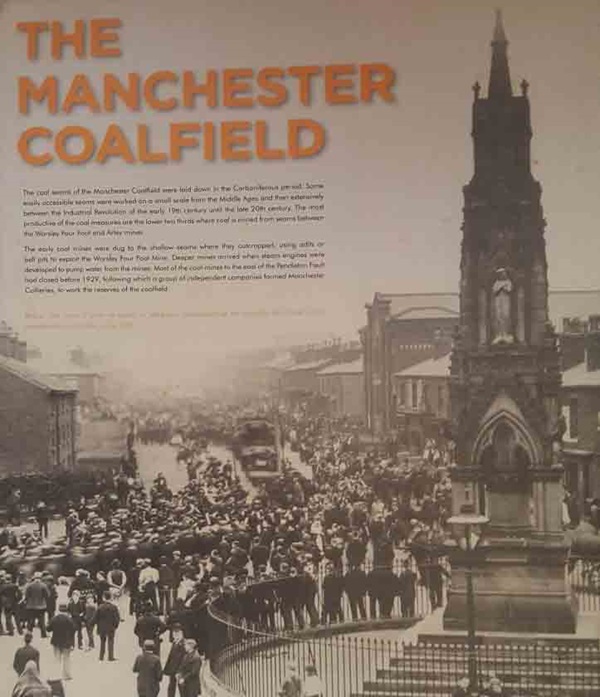
The text reads: The coal seams of the Manchester Coalfield were laid down in the Carboniferous period. Some easily accessible seams were worked on a small scale from the Middle Ages and then extensively between the Industrial Revolution of the early 19th century until the late 20th century. The most productive of the coal measures are the lower two thirds where coal is mined from seams between the Worsley Four Foot and Arley mines.
The early coal mines were dug to the shallow seams where they outcropped, using adits or bell pits to exploit the Worsley Four Foot Mine. Deeper mines arrived when steam engines were developed to pump water from the mines. Most of the coal mines to the east of the Pendleton Fault had closed before 1929, following which a group of independent companies formed Manchester Collieries, to work the reserves of the coalfield.
Below: The miners unite to march in Walkden, demonstrating the benefits that trade union membership could offer, c1885
A photograph and text about Jamie Moore
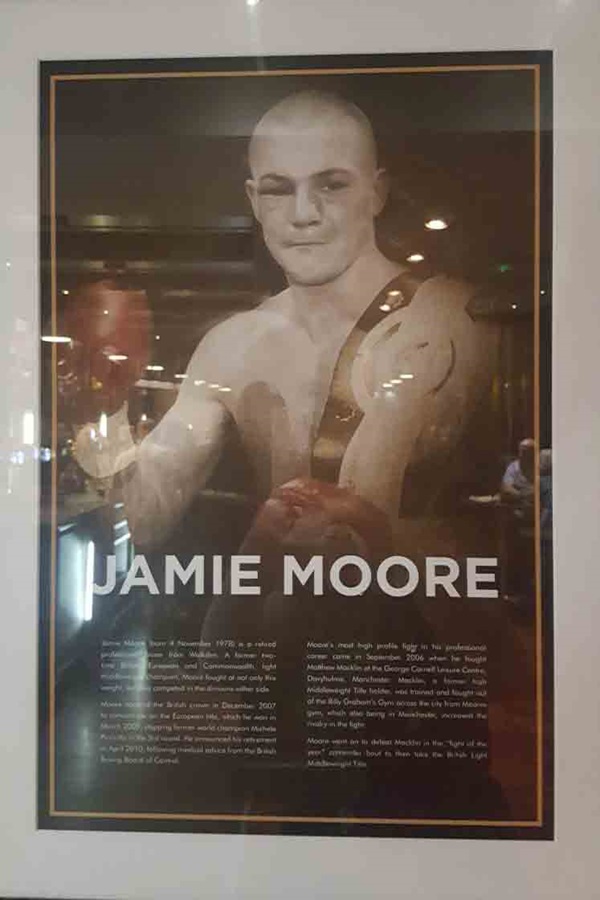
The text reads: Jamie Moore (born 4 November 1978) is a retired professional boxer from Walkden. A former two-time British, European and Commonwealth light middleweight champion, Moore not only fought at his weight but also competed in the divisions either side.
Moore vacated the British crown in December 2007 to concentrate on the European title, which he won in March 2009, stopping former world-champion Michele Piccirillo in the third round. He announced his retirement in April 2010, following medical advice from the British Boxing Board of Control.
Moore’s most high-profile fight in his professional career came in September 2006 when he fought Matthew Macklin at the George Carnell Leisure Centre, Davyhulme, Manchester. Macklin, a former Irish middleweight title holder, was trained and fought out of the Billy Graham’s Gym across the city from Moore’s gym, which, also being in Manchester, increased the rivalry in the fight.
Moore went on to defeat Macklin in the ‘fight of the year’ contender bout to then take the British light middleweight title.
An illustration and text about Lord Francis Egerton
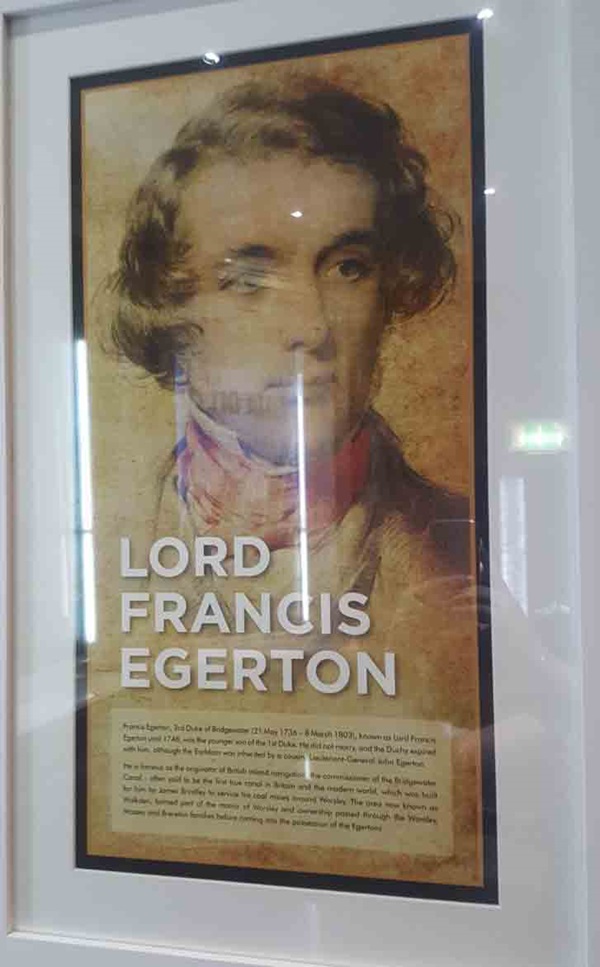
The text reads: Francis Egerton, 3rd Duke of Bridgewater (21 May 1736 – 8 March 1803), known as Lord Francis Egerton until 1748, was the younger son of the 1st Duke. He did not marry, and the duchy expired with him, although the earldom was inherited by a cousin, Lieutenant-General John Egerton.
He is famous as the originator of British inland navigation, the commissioner of the Bridgewater Canal – often said to be the first true canal in Britain and the modern world, which was built for him by James Brindley to service his coal mines around Worsley. The area now known as Walkden formed part of the Manor of Worsley, and ownership passed through the Worsley, Massey and Brereton families before coming into the possession of the Egertons.
A photograph of the Earl of Ellesmere’s fire brigade, stationed at Walkden Yard in 1908
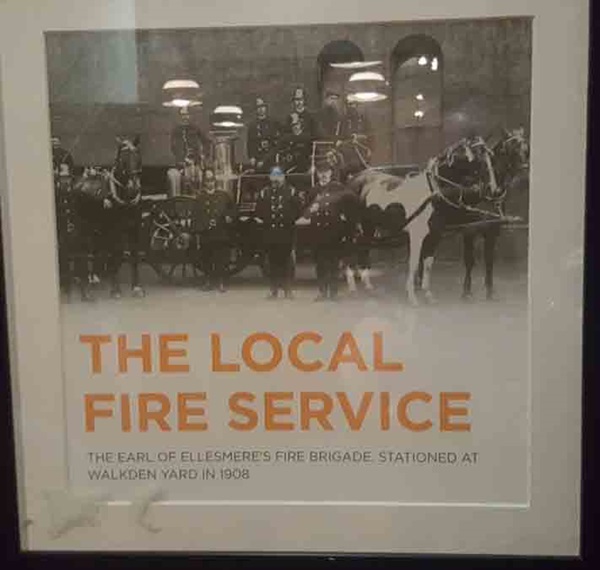
A photograph of members of the Walkden Amateur Orchestra gathered together during 1900
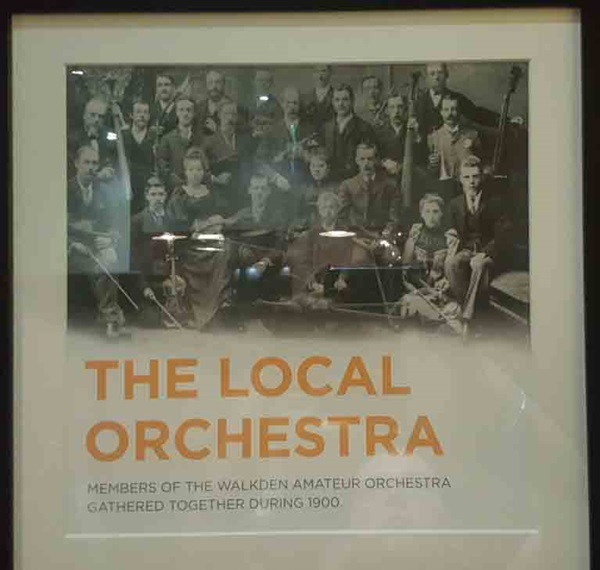
External photograph of the building – main entrance
